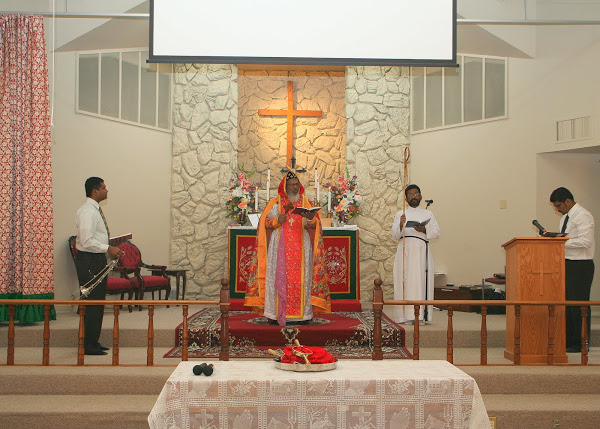
Message from the Diocesan Episcopa – Mar Thoma ECHO
The Mar Thoma ECHO, a publication of the Council of Mar Thoma Parishes in Europe, published its first issue in August 2014. It had the blessings of our Metropolitan when its digital version was released at a public function in St. John’s Mar Thoma Parish, Hounslow during Thirumeni’s visit. The printed version was released at the Mar Thoma Family Conference when a large gathering attended, and the copies were widely circulated. I am confident that all the Mar Thoma members and their friends have become aware of this publication.
The second issue is now prepared for publication with the theme, “Community, Communication, and the Church.” The editorial board will be expounding this topic which is very relevant in our times. I hope that all the members of the churches in UK and Europe will take time to go through the thought-provoking and enriching articles contained in the Mar Thoma ECHO. The aim of this publication is to build a link with the channels of love for building a communicating Mar Thoma Community in Europe.
We live in a time when we have an explosion in the field of communication. We have fast and multiple means of communication. The internet and other forms of social media have further precipitated new ways of thinking about reality, humanity, and community. A few decades ago, the main means of communication was the printed media. The Gospel was propagated through books and leaflets. The preachers travelled from place to place, or their speeches were recorded. Now, Gospel messages are available throughout the day. It has become very difficult to distinguish between the real and the fake. But now even little children have access to all kinds of information through the internet and other means of communication. They are widely abused more than being used. When we go to an airport lounge, or the waiting area of a public place, we can see that everybody is busy either texting, using their smartphone, or the iPad. Even when a person is out for sightseeing, he/she may be browsing the phone. We may be in a crowd but not face to face with the next person. Nobody has time to communicate with the person sitting next to them. We are eager to have the virtual “sight” and “touch” of a person at a distance than the person in front of us. The “virtual” is taking the place of the “real.” We have become “islands” than part of a human community.
The basic unit of any community is the family. So proper communication should happen within the family. The communication in families were held mostly during mealtime and at the time of family prayer. Now, we seldom have family time and family altar. For proper communication, we should know the language and state of mind of the other person. A new-born’s means of communication is crying. It is the means that God has created the child with to express its needs to the parents and community. Communication is to understand each other. When proper communication fails, it leads to breakdowns in family relationships. If there is brokenness in families, it will affect the whole society. The breakdown of communication with our neighbours, the members of our prayer groups, and parishes has distanced us from all the people. Time has come for us to rebuild our family relationships through proper communication.
This publication is coming out at a time when the whole inhabited world is celebrating Christmas. It marks God’s means of communication by sending Jesus Christ to incarnate in human history. The Word became flesh. Jesus, identified Himself with the whole creation, enabling each to see and hear Him, feel His presence, listen to His words, participate in what He did, and follow Him. This was a real experience in real life. This incarnation of Jesus enabled the creation to turn to God. He exhorted again by communicating through His life, to love one’s neighbours. This is a turn to each other. He gave His life on the cross for the redemption of the whole creation, which St. Paul narrates as the “ministry of reconciliation.” Christology will certainly come to emphasize even more strongly than in the past that Jesus was a “man for others.” Soteriology will emphasize the corporate dimensions of the saving work of the Triune God in the events of the crucifixion and the resurrection. St. John calls this communication as an act of love. Jesus gave the new commandment to love as He loved. There is no better and effective communication than “love.”
Church is in the world for the ministry of communication. The Good News of the Kingdom of God, revealed in Christ Jesus, is to be communicated. The mission and ministry of the Church are means of communicating the Gospel. St. Paul reminds that we are Christ’s ambassadors. How do we carry out this mission? Paul’s method of communicating the Gospel is expressed in the following verses: “To the Jews I became like a Jew, to win the Jews. To those under the law I became like one under the law (though I myself am not under the law) so as to win those under the law. To those not having the law I became like one not having the law (though I am not free from God’s law but am under Christ’s law), so as to win those not having the law. To the weak I became weak, to win the weak. I have become all things to all people so that by all possible means, I might save some” (I Corinthians 9:20-22, NIV). We are the media through which the message of Christ is communicated to the world. We must do this by our daily Christian living.
I wish the publication all success and God’s blessings.
Mar Theodosius+














